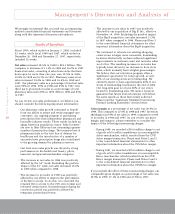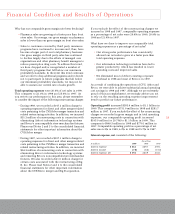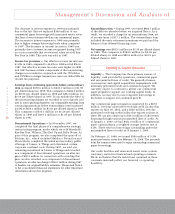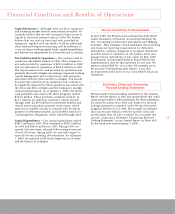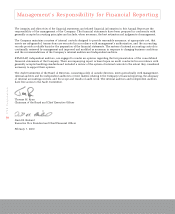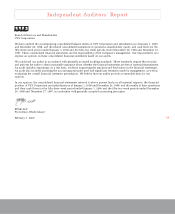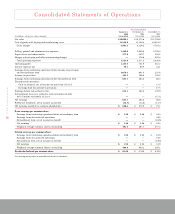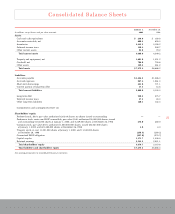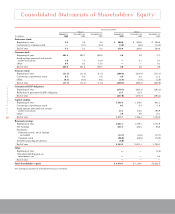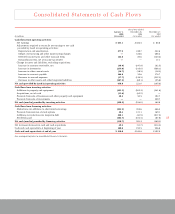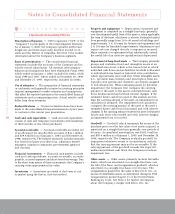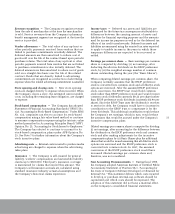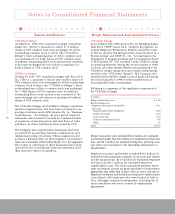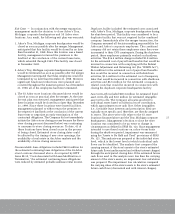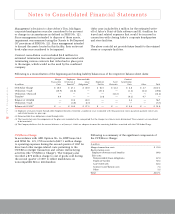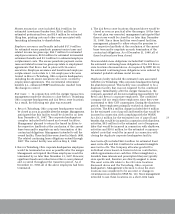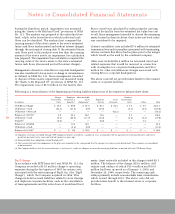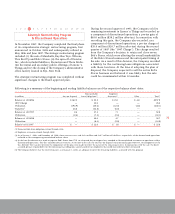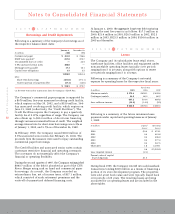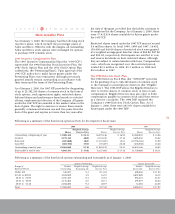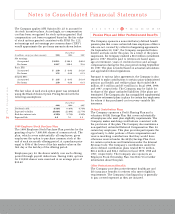CVS 1999 Annual Report Download - page 26
Download and view the complete annual report
Please find page 26 of the 1999 CVS annual report below. You can navigate through the pages in the report by either clicking on the pages listed below, or by using the keyword search tool below to find specific information within the annual report.
Notes to Consolidated Financial Statements
24
CVS Corporation
Significant Accounting Policies
Description of business ~ CVS Corporation (“CVS” or the
“Company”) is principally in the retail drugstore business.
As of January 1, 2000, the Company operated 4,098 retail
drugstores and three mail order facilities located in 26
states and the District of Columbia. See Note 13 for further
information about the Company’s business segments.
Basis of presentation ~ The consolidated financial
statements include the accounts of the Company and its
wholly-owned subsidiaries. All material intercompany
balances and transactions have been eliminated. Fiscal 1999,
which ended on January 1, 2000, included 53 weeks, while
fiscal 1998 and 1997, which ended on December 26, 1998,
and December 27, 1997, respectively, included 52 weeks.
Use of estimates ~ The preparation of financial statements
in conformity with generally accepted accounting principles
requires management to make estimates and assumptions
that affect the reported amounts in the consolidated financial
statements and accompanying notes. Actual results could
differ from those estimates.
Reclassifications ~ Certain reclassifications have been
made to the consolidated financial statements of prior years
to conform to the current year presentation.
Cash and cash equivalents ~ Cash and cash equivalents
consist of cash and temporary investments with maturities
of three months or less when purchased.
Accounts receivable ~ Accounts receivable are stated net
of an allowance for uncollectible accounts of $41.1 million
and $39.8 million as of January 1, 2000, and December 26,
1998, respectively. The balance primarily includes amounts
due from third party providers (e.g., pharmacy benefit
managers, insurance companies, governmental agencies
and vendors).
Financial instruments ~ Financial instruments include
cash and cash equivalents, accounts receivable, accounts
payable, accrued expenses and short-term borrowings. Due
to the short-term nature of these instruments, the Company’s
carrying value approximates fair value.
Inventories ~ Inventories are stated at the lower of cost
or market using the first-in, first-out method.
Property and equipment ~ Depreciation of property and
equipment is computed on a straight-line basis, generally
over the estimated useful lives of the asset or, when applicable,
the term of the lease, whichever is shorter. Estimated useful
lives generally range from 10 to 40 years for buildings and
improvements, 3 to 10 years for fixtures and equipment and
3 to 10 years for leasehold improvements. Maintenance and
repair costs are charged directly to expense as incurred.
Major renewals or replacements that substantially extend
the useful life of an asset are capitalized and depreciated.
Impairment of long-lived assets ~ The Company primarily
groups and evaluates fixed and intangible assets at an
individual store level, which is the lowest level at which
individual cash flows can be identified. Goodwill is allocated
to individual stores based on historical store contribution,
which approximates store cash flow. Other intangible assets
(i.e., favorable lease interests and prescription files) are
typically store specific and, therefore, are directly assigned
to individual stores. When evaluating assets for potential
impairment, the Company first compares the carrying
amount of the asset to the asset’s estimated future cash
flows (undiscounted and without interest charges). If the
estimated future cash flows used in this analysis are less
than the carrying amount of the asset, an impairment loss
calculation is prepared. The impairment loss calculation
compares the carrying amount of the asset to the asset’s
estimated future cash flows (discounted and with interest
charges). If the carrying amount exceeds the asset’s estimated
future cash flows (discounted and with interest charges),
an impairment loss is recorded.
Goodwill ~ Goodwill, which represents the excess of the
purchase price over the fair value of net assets acquired, is
amortized on a straight-line basis generally over periods of
40 years. Accumulated amortization was $105.0 million
and $85.6 million as of January 1, 2000, and December 26,
1998, respectively. The Company evaluates goodwill for
impairment whenever events or circumstances indicate
that the carrying amount may not be recoverable. If the
carrying amount of the goodwill exceeds the expected
undiscounted future cash flows, the Company records an
impairment loss.
Other assets ~ Other assets primarily include favorable
leases, which are amortized on a straight-line basis over
the life of the lease, and reorganization goodwill, which is
amortized on a straight-line basis over 20 years. The
reorganization goodwill is the value of Revco D.S., Inc., in
excess of identifiable assets, as determined during its 1992
reorganization under Chapter 11 of the United States
Bankruptcy Code. See Note 2 for further information
about the Company’s merger with Revco D.S., Inc.
12 3 4 5 6 7 8 9 10 11 12 13 14 15


